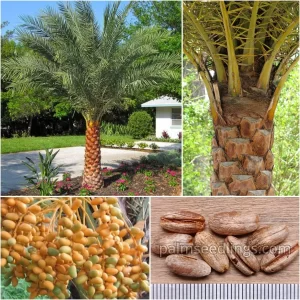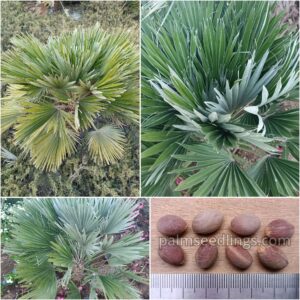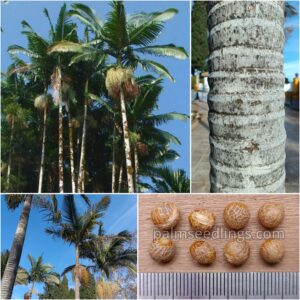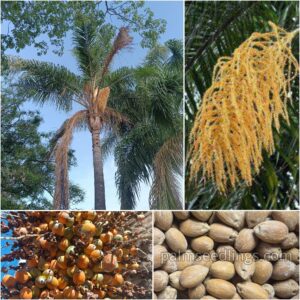Menu
4,00 € – 60,00 €
Product Details
Phoenix dactylifera is a tall palm with a rugged trunk, feathery gray-green fronds, and large clusters of edible, sweet dates.
-Germination Time: Fast/Medium
-Germination Difficulty: Easy
-Growth speed: Medium
-Cold Hardiness: -9°C (16°F)
Select Quantity
*Shipping cost is calculated automatically in the cart after adding the products.
Phoenix dactylifera, commonly known as the date palm, is a tall, graceful palm tree that typically grows 15–25 meters (50–80 feet) in height. It has a slender, textured trunk marked by old leaf scars and is topped with a crown of feathery, pinnate fronds reaching 4–6 meters (13–20 feet) long. The fronds consist of numerous narrow, pointed leaflets. This palm is dioecious, with male and female flowers on separate trees, and produces clusters of sweet, edible dates that vary in size, color and flavor.
Native to arid regions of the Middle East and North Africa, the date palm is highly adapted to dry climates and sandy soils. It is exceptionally drought-resistant and can tolerate saline conditions, making it vital in desert agriculture. The Phoenix dactylifera withstands cold temperatures as low as -9°C (16°F) but thrives in warmer regions. With its historical significance and practical uses, this palm remains an iconic species in both traditional and modern landscaping.
| Weight | N/A |
|---|---|
| Quantity | 10 Seeds, 100 Seeds, 1.000 Seeds |




All rights reserved PalmseedlingsⓇ 2025.